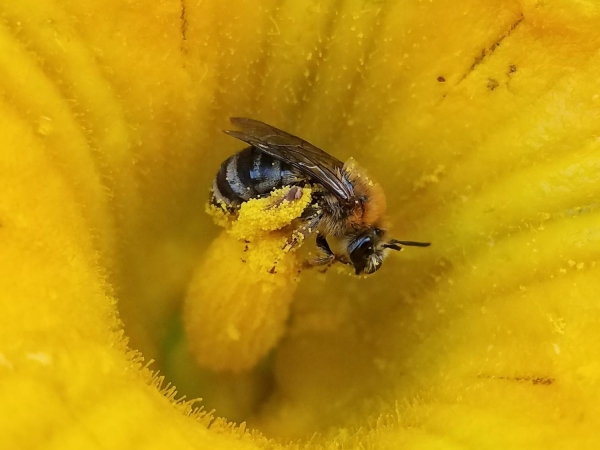How well bees tolerate temperature extremes could determine their ability to persist in a changing climate.
How well bees tolerate temperature extremes could determine their ability to persist in a changing climate. But heat tolerance varies between and within populations, so a research team led by Penn State entomologists examined bee physical traits — such as sex differences in body mass — to understand how these traits interact with environmental conditions, pathogens and other factors.
In a study published recently in Ecology and Evolution, the researchers measured body mass, local climate and pathogen intensity to assess how these factors influence heat tolerance and its population-level variation among individuals of the species Xenoglossa pruinosa, commonly known as the hoary squash bee. They found that variation in heat tolerance was influenced by size, sex and infection status of the bees.
“Small-bodied, ectothermic — or cold-blooded — insects are considered to be highly vulnerable to changing climate because their ability to maintain proper body temperature depends on external conditions,” said study author Laura Jones, who led the research as a doctoral candidate in ecology at Penn State and is now a postdoctoral fellow at the University of Texas at Austin. “Understanding how organisms tolerate temperature extremes is critical for assessing the threat climate change poses to species’ distribution and persistence.”
Read more at: Penn State University
A female squash bee collects pollen on a squash flower in Loganton, Pennsylvania. Researchers found that variation in squash bees' heat tolerance was influenced by size, sex and infection status of the bees. (Photo Credit: Laura Jones)




